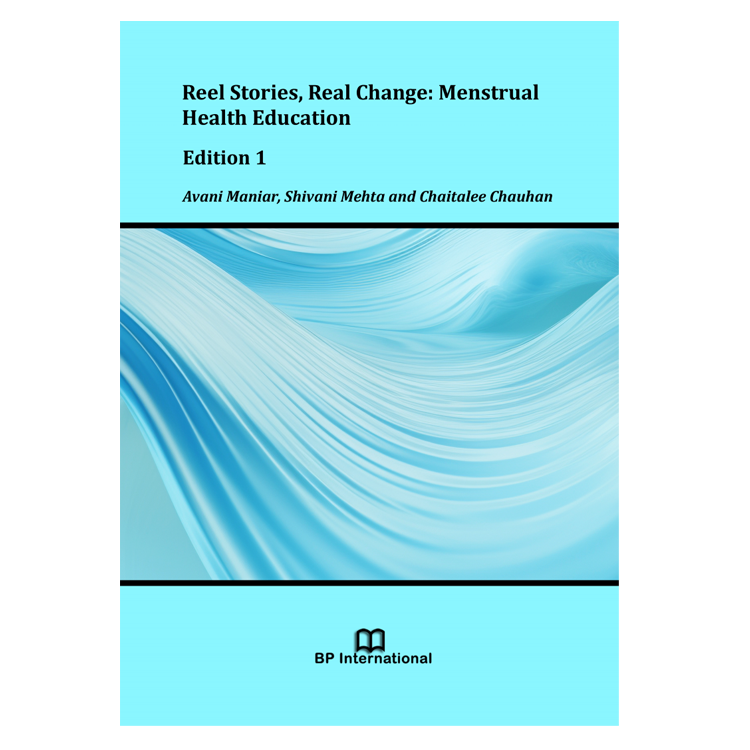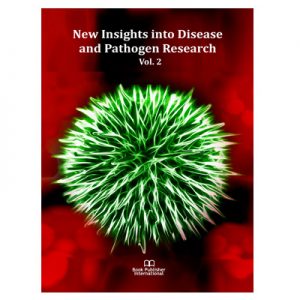Menstrual health and hygiene is a topic that has long been enveloped in silence, misunderstanding, and stigma. Across cultures and communities, discussions surrounding menstruation are often shrouded in taboo, limiting access to accurate information and perpetuating harmful myths. For adolescent girls, who stand at a critical juncture in their physical and emotional development, this lack of knowledge can lead to confusion, shame, and poor hygiene practices. In a world striving for gender equality and inclusive health education, it is vital to address these gaps with urgency and empathy.
Reel Stories, Real Change: Menstrual Health Education is a testament to the power of storytelling as a vehicle for education and social change. Through the lens of short films, this book explores an innovative approach to addressing menstrual health awareness among adolescent girls in Vadodara, India. The study documented within these pages evaluates the effectiveness of using short films to impart knowledge and inspire healthier practices among young girls attending government schools. By focusing on this specific demographic, the research brings to light the pressing need for targeted interventions in communities where resources and education about menstruation remain scarce.
The idea of using short films as an educational tool is both practical and forward-thinking. In the digital age, where visual media dominates the ways we consume information, short films emerge as a powerful medium to engage audiences. Their ability to combine emotional storytelling with impactful visuals makes them particularly effective in addressing sensitive topics like menstruation. The short films utilized in this study were not only designed to inform but also to challenge deeply ingrained taboos and cultural practices that hinder young girls from managing their menstrual health with confidence and dignity.
The research presented in this book is anchored in the lived experiences of 110 adolescent girls, aged 10 to 15, who participated in the study during the 2022-2023 academic year. The study’s design reflects a thoughtful approach to understanding the realities faced by these girls. Through pre-and post-test questionnaires, the research team captured shifts in knowledge, attitudes, and practices, providing compelling evidence of the transformative potential of short films in health education. For instance, prior to watching the films, nearly half of the participants had limited knowledge of menstruation, and much of this knowledge came from informal or unreliable sources. After viewing the films, more than 50% reported a significant increase in understanding, particularly about menstrual hygiene practices.
One of the most striking findings of the study is the participants’ response to the films. The girls found the content engaging, relatable, and easy to understand. This underscores the importance of using creative and contextually relevant methods to convey critical information. The study also revealed a willingness among the participants to adopt healthier practices, such as exercising to alleviate menstrual pain and consulting health workers when necessary. These behavioral shifts highlight the potential for audiovisual media to bridge gaps in knowledge and inspire action.
However, this work is not just about the impact of short films. It is also a reflection on the broader systemic challenges that hinder progress in menstrual health education. In many parts of India, and indeed around the world, menstruation is still viewed as a topic unworthy of open discussion. This silence creates a vacuum where misinformation thrives. The research documented in this book serves as a clarion call for breaking this silence and normalizing conversations about menstruation, both in schools and within families.
Another critical aspect of this study is its focus on government schools in Vadodara. These schools represent a microcosm of the challenges faced by underprivileged communities in accessing health education. Limited resources, coupled with societal stigma, often leave adolescent girls unprepared to manage their menstrual health effectively. By targeting this population, the study not only addresses a critical need but also demonstrates the scalability of short films as an educational tool in similar settings across India and beyond.
The findings of this research are particularly relevant for policymakers, educators, and advocates working in the fields of public health and gender equality. The evidence presented here can inform strategies to integrate audiovisual media into school curricula, community outreach programs, and awareness campaigns. Moreover, the study highlights the importance of culturally sensitive content that resonates with the target audience. By incorporating local languages, relatable characters, and context-specific scenarios, the short films used in this study succeeded in creating a meaningful connection with the viewers.
As authors, we have been deeply moved by the stories and insights that emerged from this research. The resilience of the adolescent girls who participated in the study is both inspiring and humbling. Despite facing numerous challenges, these young minds demonstrated a remarkable capacity for learning and change. Their willingness to engage with the content and embrace healthier practices gives us hope for a future where menstrual health is no longer a neglected issue but a cornerstone of public health initiatives.
Reel Stories, Real Change: Menstrual Health Education is more than a documentation of research; it is a celebration of the potential for creativity and innovation to drive social change. It serves as a reminder that even in the face of deeply entrenched stigmas, change is possible when we combine empathy with effective communication strategies. Short films, as demonstrated in this study, offer a versatile and impactful medium for addressing complex social issues. Their ability to simplify information, evoke emotions, and spark conversations makes them a valuable tool for educators and advocates alike.
As you read through the chapters of this book, we invite you to reflect on the transformative power of education and storytelling. Whether you are a policymaker seeking effective interventions, an educator looking for innovative teaching methods, or a student of social change, we hope this work inspires you to think creatively about the challenges we face as a society. Menstrual health may be the focus of this study, but the lessons learned here extend far beyond. They speak to the universal need for inclusive, accessible, and engaging approaches to education and advocacy.
In closing, we extend our heartfelt gratitude to the participants, educators, and stakeholders who made this study possible. Their contributions have not only enriched this research but also paved the way for future initiatives aimed at improving menstrual health education. We also hope that this book serves as a resource and a source of inspiration for those committed to creating a more equitable and informed world.





